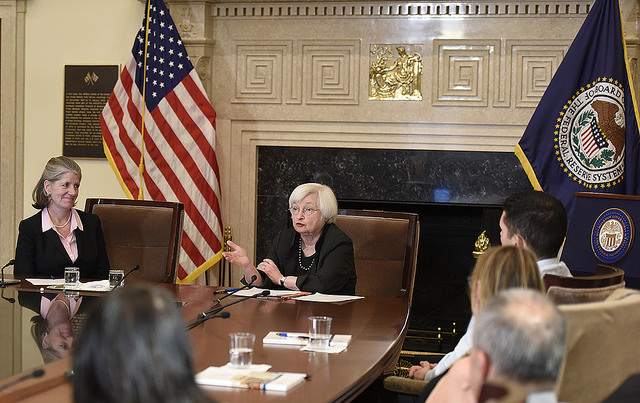
Traders will be looking at the consumer price index data to be released today. According to economists polled, consumer prices are expected to rise 0.1% on the month. This would reverse the 0.1% decline seen in the previous month. On a year over year basis, headline consumer prices are expected to rise 1.7%, marking a slower pace of increase after registering a 1.9% increase in the previous month.
Excluding food and energy prices, core consumer price is expected to rise 0.2%, extending the gains from 0.1% registered during the previous month. On a yearly basis, core CPI is expected to 1.7%, rising at the same pace as the previous month.
Fed concerns on inflation
Inflation data is likely to remain a central point for the Fed. The Fed chair, Janet Yellen told lawmakers earlier this week in her congressional testimony that inflation could pick up following the robust labor market.
According to Ms. Yellen, the tighter labor market conditions could eventually push up wages and inflation as a result. However, despite sounding confident, the Fed Chair said that inflation could remain below the Fed’s 2% inflation target rate for a considerable period of time.
Thus, today’s inflation data will be critical for the markets. Further weakness or evidence of no inflation pressures could potentially dent the expectations of further rate hikes from the Fed.
The Fed is expecting to make a case for one more rate hike later this year. However, the odds of a rate hike are starting to diminish with the market’s pricing in around a 50% chance of a rate hike this year.
Fed’s Beige book shows modest expansion in the economy
On Wednesday, the Fed’s Beige book report showed that the US economy increased at a moderate pace in the last several weeks. Wage pressures were reported across both the low and highly skilled jobs as well.
The Fed’s Beige book report said, “Activity expanded across all 12 Federal Reserve Districts in June, with the pace of growth ranging from slight to moderate.” The data was based on the reports from the 12 regional Federal Reserve banks.













Leave A Comment